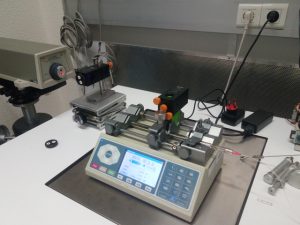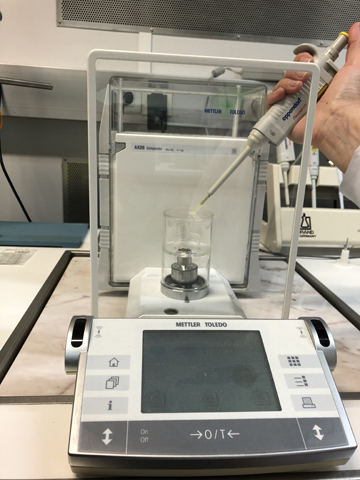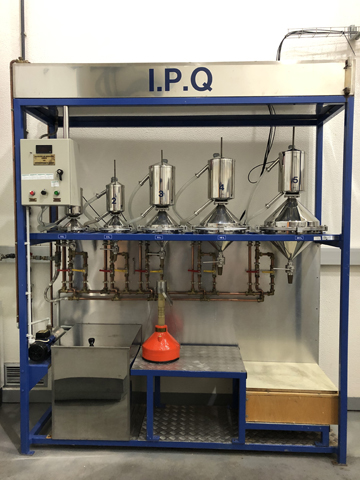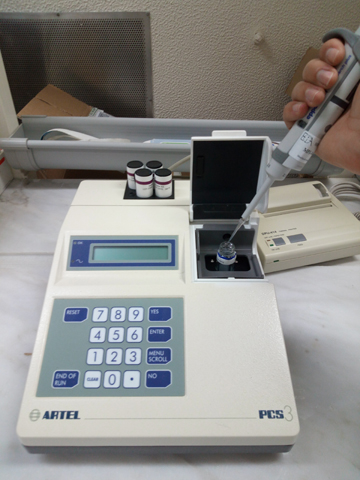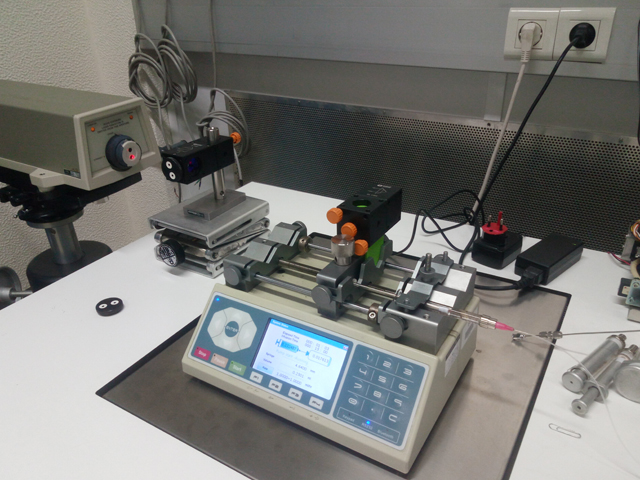The traceability of the Volume and Flow Laboratory is established to the national mass standards, temperature standards, time standards and density of the used liquid.
Volume
The derived unit of the International System of Units (SI) of the quantity Volume (V) is the cubic meter (m3) defined as: The volume of a cube with 1 metre edge.
The litre (L or l) can also be used as a measurement unit and it is equivalent to 0,001 m3 or 1 dm3. It is a Non-SI unit accepted for use with the SI.
Flow
The derived unit of the International System of Units (SI) of the quantity Flow(Q) is cubic meter (m3)/second (s) defined as: the volume of fluid passing through a given area per unit time.
Calibration methods
The instrument is weighted empty and dried and then weighted full with the calibration liquid. The difference between the two mass values gives the mass of the contained liquid; usually water, converted then to volume using the formula described in ISO 4787. If we consider the time, flow can also be determined.
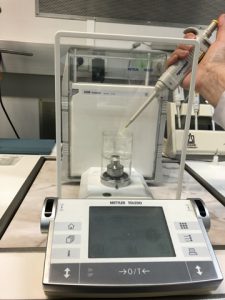
A constant volume of water previously calibrated by the gravimetric method is transferred to the instrument under calibration, according to guide EURAMET cg-21. In this method the standards are automatic pipettes or volumetric standards of different capacity.
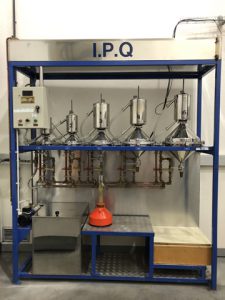
The volume of the micropipette is determined by the variation of the absorvance of the colorimetic solutions used.
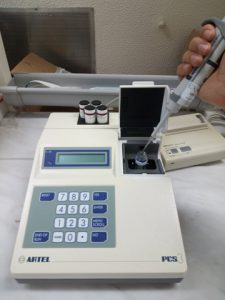
The interferometric method is a primary method that uses an interferometer to monitor the distance covered, over a period of time, by a retro-reflecting cube placed on the motor of the instrument to be calibrated (flow measuring instrument). Knowing the internal diameter of the syringe used, it is possible to determine the flow rate.
